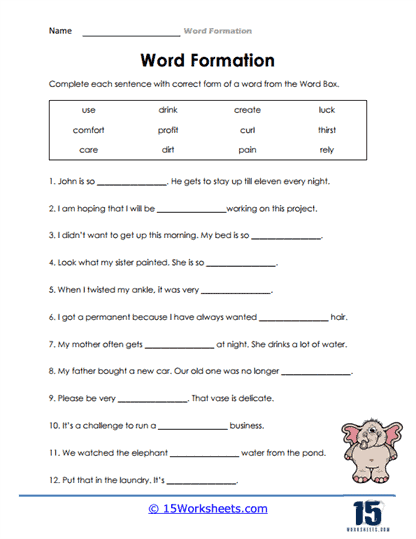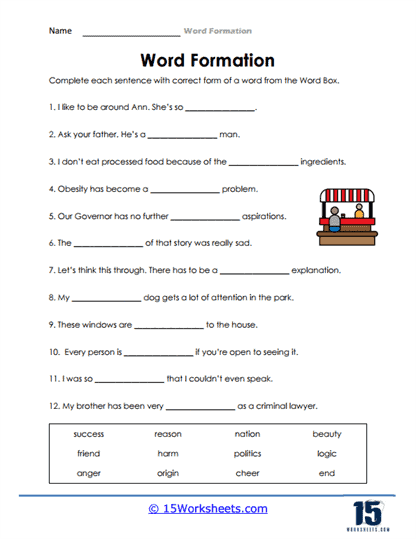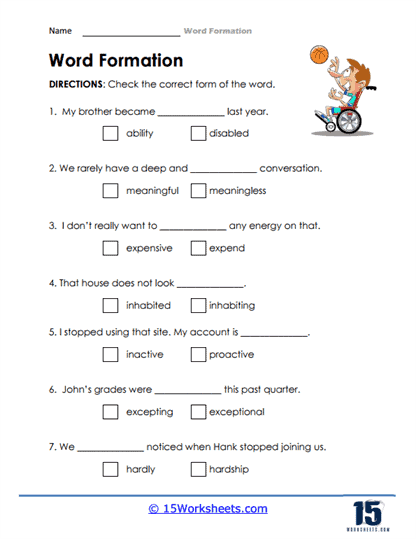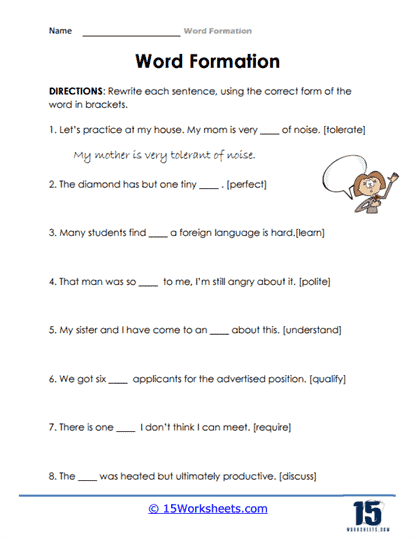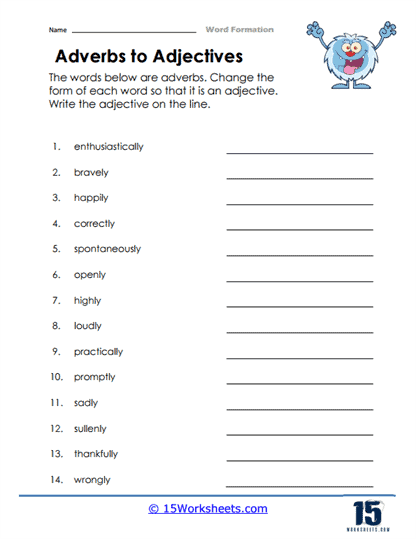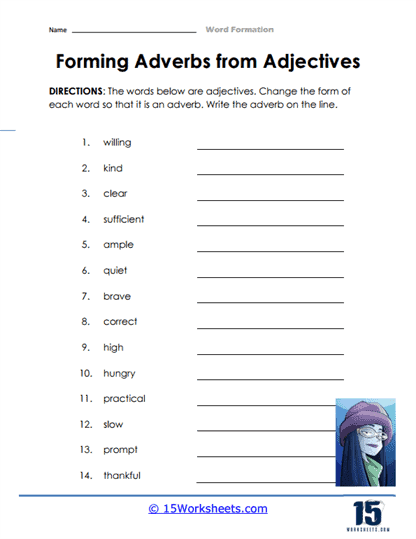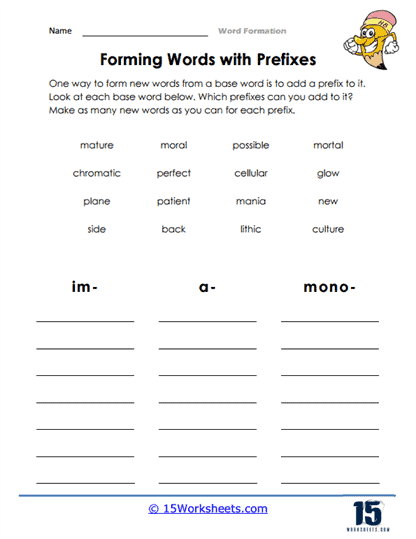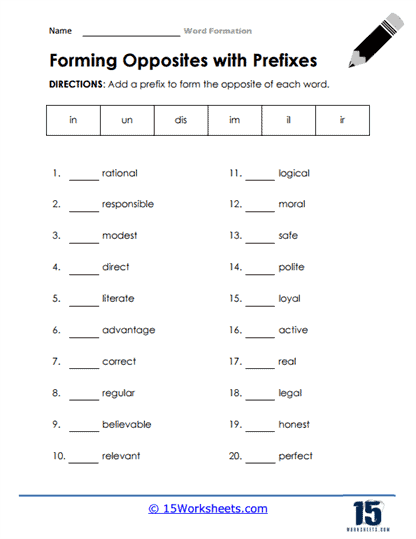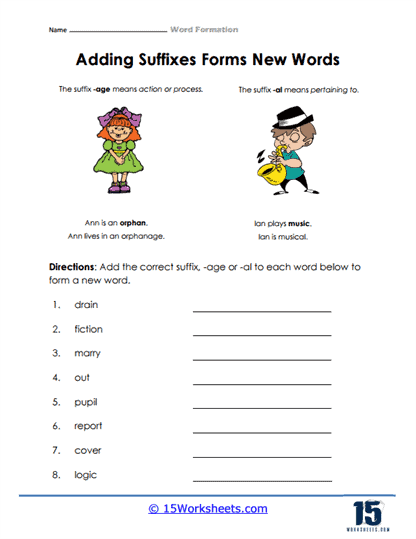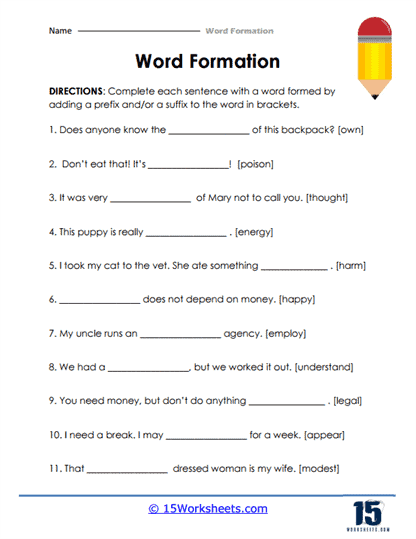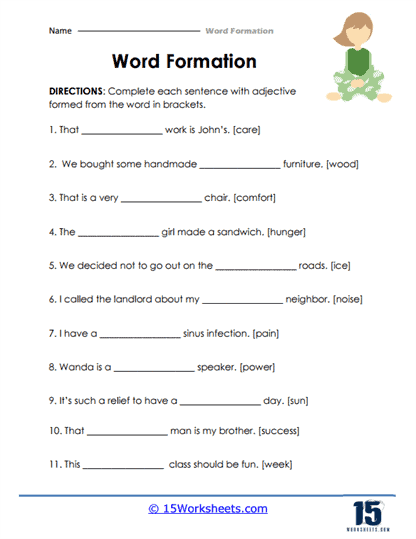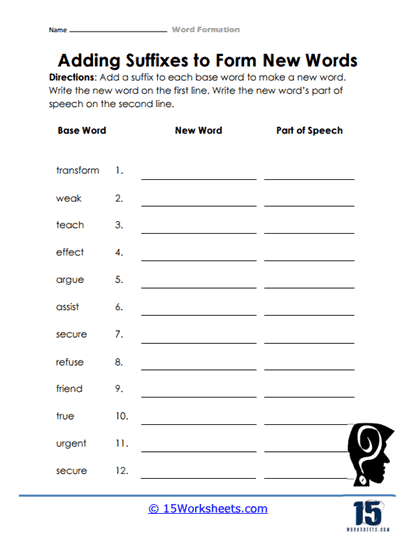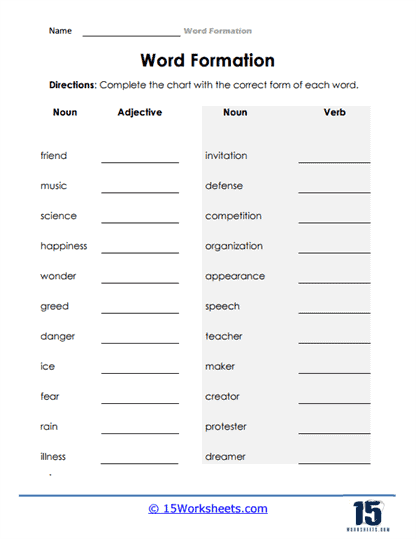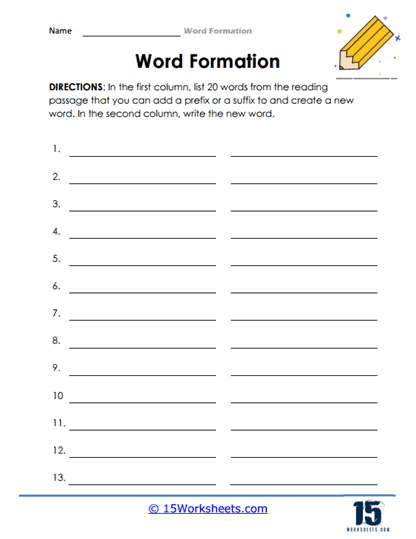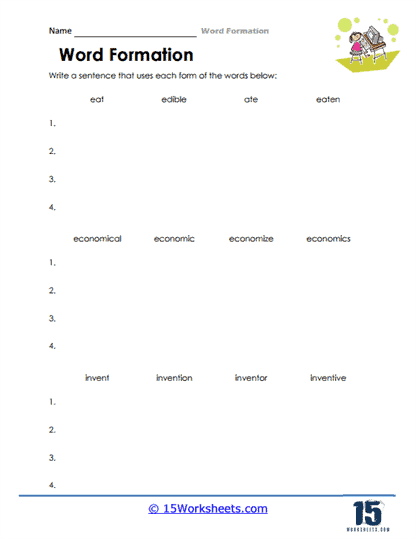Word Formation Worksheets
All About These 15 Worksheets
Students dive into the realm of word formation with this captivating series of 15 worksheets. This comprehensive collection of vocabulary worksheets is designed to empower students with the knowledge and skills to explore the fascinating world of word creation, including prefixes, suffixes, roots, adverbs, adjectives, and more.
This series comprises a variety of engaging worksheets that cater to students of different grade levels and language proficiency levels. Each worksheet presents a range of word formation exercises, encouraging students to decipher the meaning of unfamiliar words, analyze word structures, and expand their vocabulary through strategic word manipulation. Through these worksheets, students will:
- Fill in the blanks with the correct word forms that fit various sentences to complete them;
- Distinguish the differences in contextual meaning between similar-sounding words;
- Rewrite sentences with the correct forms of words;
- Form adverbs from adjectives and vise versa;
- Add prefixes or suffixes to base words to form words with different meanings;
- Transform nouns into verbs;
- And write their own sentences using similar words in different forms.
This series of worksheets serves as an invaluable resource for educators seeking to enhance their students’ vocabulary and language skills. By exploring the intricacies of word formation, students develop a more profound appreciation for language, expand their vocabulary arsenal, and improve their reading comprehension, writing abilities, and overall language proficiency.
Types Of Word Formation Processes
The word-formation process expands vocabulary by using the existing words or completely changing existing words into new words using different techniques or processes. This helps us communicate better and relay our ideas and thoughts simply and comprehensively. There are many types of word-formation processes in linguistics; let’s learn about them.
Compounding
Compounding is a type of word formation process that involves combining two or more words to form a new word. There are 3 types of compound words in English literature; open form, closed-form, and hyphenated. Compounding words help make your essay creative and descriptive for the reader.
Examples
- Hotdog
- Small ltalk
- Mother-in-law
- breakup
Conversion
In the conversion process, a word is changed from one word class to another, such as a noun to a verb. It can also change a proper noun into a common noun.
Examples
- Email (noun), to email (verb)
- Jet (noun), jetting (verb)
- Hope (noun), to hope (verb)
Abbreviation
An abbreviation is a commonly used word-formation process that you must be aware of. In this process, a long-phrase or word is shortened. There are 3 ways to shorten a word; blending, clipping, and acronym.
Blending
In this type, speakers or writers combine two words based on sound structure rather than morpheme structure. These words are called blends, formed regardless of where one ends and the other starts. The meaning of the new word is a blend of the words separately.
Examples
- Brunch (breakfast + lunch)
- Mocktail (mock + cocktail)
- Motel (motor + hotel)
Clipping
In this type, a word is shortened by clipping off a certain part of the word. The resulting word preserves the original meaning and has become shorter in size. There are 4 types of clippings; fore clipping, back clipping, middle clipping, and complex clipping.
Examples
- Celebs (celebrity)
- Burger (hamburger)
- Limo (limousine)
- Tux (tuxedo)
Acronyms
Another popular word-formation process is acronyms. In this type, the first letter of each word in a phrase is combined to form a shorter version which is more commonly used. This practice initially started in the military and is now prevalent in layman terms, medical terms, etc.
Examples
- BRB (be right back)
- HIV (human immunodeficiency virus)
- ASAP (as soon as possible)
Derivation
In this word-formation process, derivational affixes are attached to a word to form a new word, regarded as bound morphemes. Moreover, a derivation suffix changes a word from one syntactic category into another syntactic category.
Examples
- Slow to slowness
- Drink to drinkable
- Happy to happiness
- Large to enlarge
Back-Formation
The back-formation process is used to form a new word by removing supposed affixes from a word. It is also used to change the word category from noun to verb. It is also considered a sub-type of clipping, as longer words are shortened by removing a certain part of the word.
Examples
- Insert from insertion
- Donate from donation
- Survey from surveillance
- Destroy from destruction
It might seem harder than it looks, but now you can create new words using any of the above word-formation processes. The idea is not to create new unique words; it’s to use existing word roots and apply different techniques to give them new meaning.

